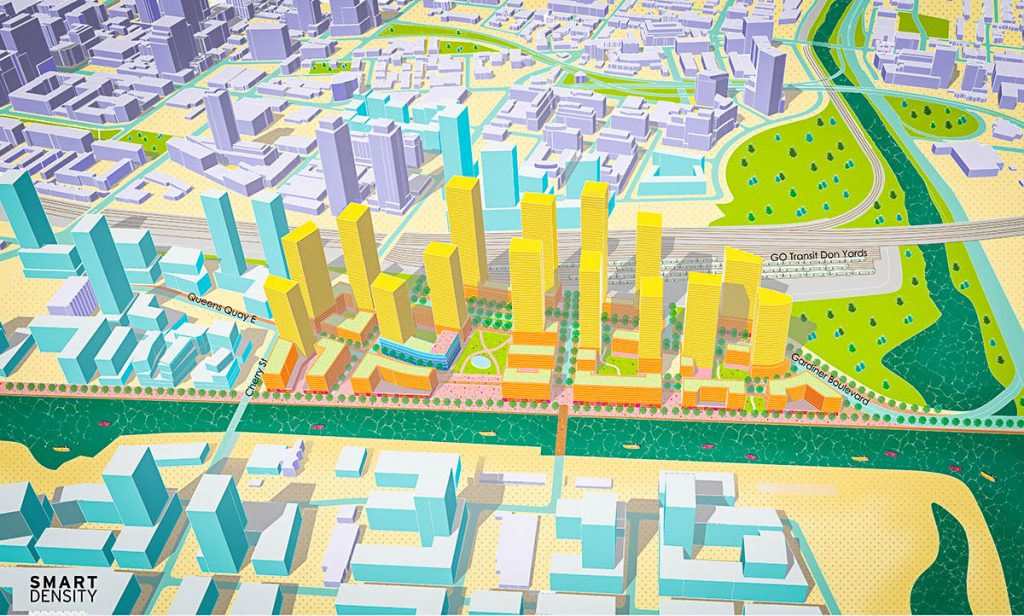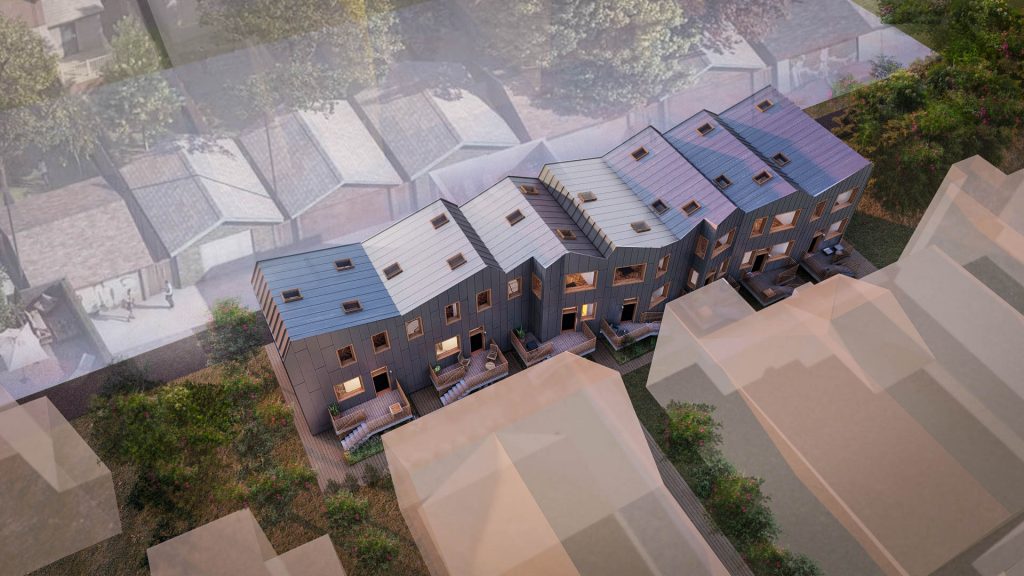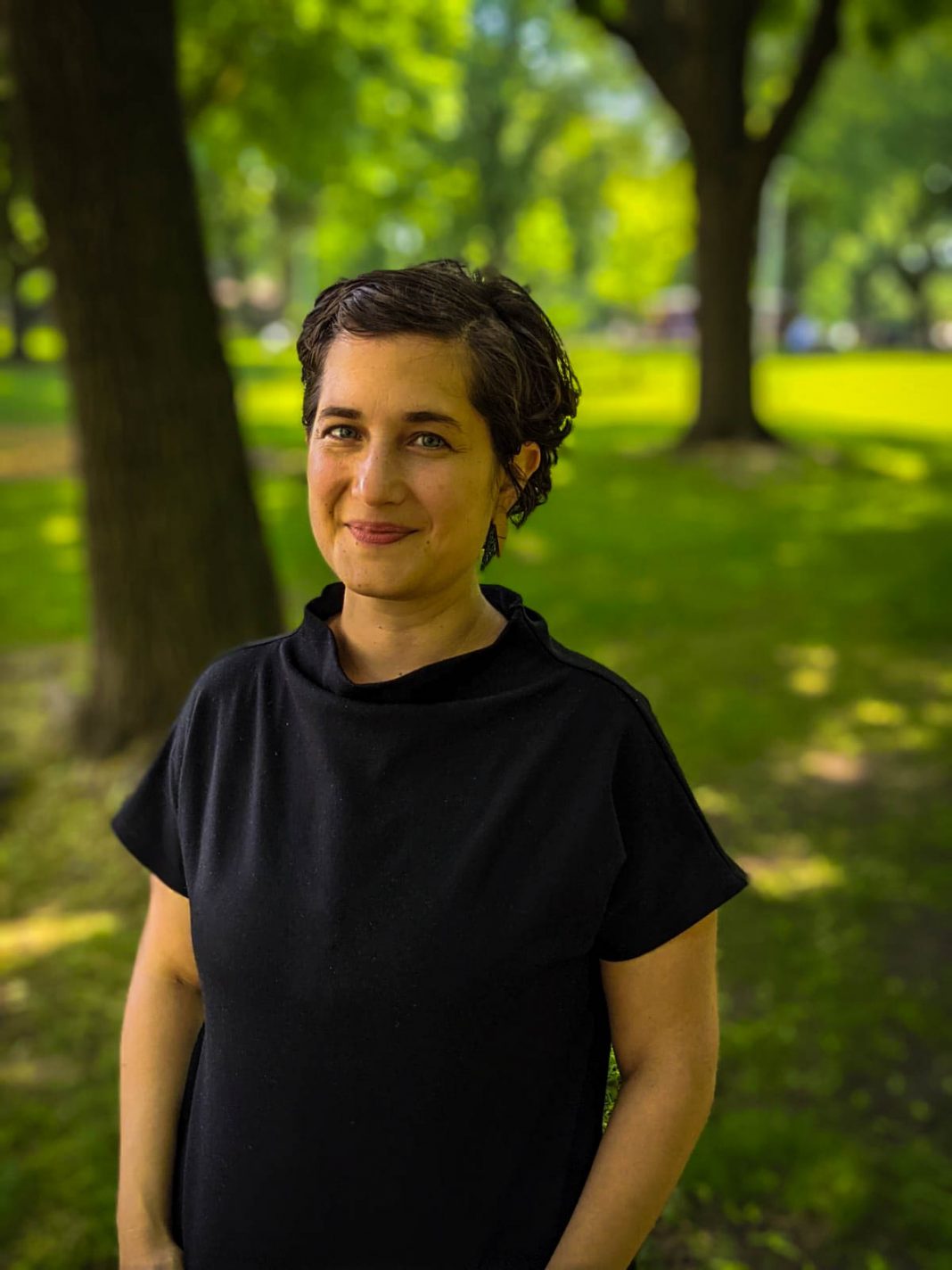Canada, similar to the US, has a heart for single-family houses and suburbs. A concept not really suitable for rapid urbanisation and the need for sustainable and affordable housing of the future. Thankfully, there are architects like Naama Blonder who are trying to change the conversation.
Naama Blonder is an architect and urban designer located in Toronto, Ontario, Canada and is, as the co-founder of the architecture firm Smart Density, committing her knowledge to smart and affordable urban planning and the re-education of the North American multi-family housing market.
Interest in Affordable Housing Architecture
When studying architecture, Naama’s interest in housing affordability was not yet stoked. Like many architects, she dreamed of designing grand, fancy public buildings like libraries and community centres. But today’s truth got a hold of her.
“The reality is that way more people need housing than libraries.”
With this realisation, her interest in housing affordability and “how to get the private sector more involved, how to create smart solutions and make the city a better place” grew.
Being an architect was a dream of Naama since she was 10 years old. Going to architecture school was,therefore, a no-brainer. During her studies, she not only learned the tools of urban design but realised “that architecture can really open so many doors and develop your way of thinking to become solution-oriented.”
Starting her architecture firm has given Naama the freedom to have a voice of her own in urban planning and the ability to decide what she wants to commit her work to.
Smart Density – A Family-Friendly Way of Living
Before starting with the work her architectural firm does, let’s take a look at the company’s name. Smart density, as a concept described in Naama’s words, is the “understanding that being close to amenities and public transit is a family-friendly way to raise your kids”. And alongside this realisation, housing is an inevitable component of smart density.
“Housing is the core essence of our cities and captures everything under it – transit and sustainability, for instance.”
Naama co-founded Smart Density four years ago, and the name perfectly represents the issue of housing in Toronto, where the firm is located. Unlike in many European countries, the population of North America is growing – in part due to rapid immigration. Naama, an immigrant herself, explains that Toronto “is facing problems at a whole different scale than European cities”.
In addition to this rapid growth, Toronto and other North American cities are faced with the ongoing negative stigma of multi-family housing, as single-family houses in the suburbs are still the aspiration of many. Naama is trying to debunk the belief that living outside of the city in a single-family house is more desirable than living in an apartment in the city centre.

Hence, her projects are designed to showcase how to create space in dense cities and live comfortably surrounded by the wonderful amenities of inner-city life. “The projects we do have to fall under the smart density definition. For us, it has to be close to traffic, it has to be multi-unit.” The work Naama does also includes saying no to projects other architects would love to do – 6,000 sqft luxury homes do not really qualify as smart density.
Instead, projects taken on by the firm include, for instance, those that replace surface parking in urban areas. As Naama strongly – and rightfully – asserts, “surface parking in a city like Toronto should not exist”.
“We don’t have a parking crisis, we have a housing crisis.”
Mark Richardson, HousingNowTo.com, Technical Lead
To give you an idea of what Naama has been working on, here are two examples. Her firm developed a report as part of the Toronto Housing NowTo.com initiative to provide a vision of how to maximise affordable housing options at Kennedy Station in Toronto: a plan that includes 809 new housing units located at a site that was previously a parking lot. Check out the project here.
In addition to housing projects, smart density has also proposed a 108 km long cycling network that improves existing bike lanes and connects cyclists in the city’s outskirts to the centre. A successful proposal that won the Ontario Association of Architects’ SHIFT Infrastructure 2019 Award.
Changing the Stigma
Not only is Naama designing and planning projects that show how space in cities can be used meaningfully, but she is also educating the market around her.
As of right now, there is not really a debate being held about replacing single-family homes with multi-family units. That is why Naama is trying to change the dialogue not so much by approaching the general public directly but by having discussions with a wider audience from different sectors.

“You start by raising the awareness, and then make a business case for it”, Naama explains, adding that many developers don’t build family–friendly as they are investor-driven. The reality is that “as long as there are foreign investors investing in the city, they will build whatever the investors want, and they want the smallest units possible because the cost is per square foot”. Hence, convincing developers with a business case is, according to Naama, the best way to change their minds about family-friendly units.
Additionally, Naama is holding webinars discussing not only affordable housing but Dutch Urban Design and modular construction as well. She has also developed a series profiling several of Toronto’s city-building innovators. You can check out the different episodes here.
Living in a Multi-Family House Herself
By the way, Naama does not only preach the amenities of multi-family housing in the inner city, she is living it too. For many outside of North America, it might seem absolutely normal, but according to Naama, “it is unique to not raise your kids in a home with a backyard”.
Living in a tall building herself, she realised that family-friendly living is not best suited to the suburbs: “It’s not by having a two-car garage. It’s by living in this 15-minute-neighbourhood where we live right above a beautiful, public park.”
The beauty of inner-city living is the easy access to everything: childcare, work, and public buildings, for instance. “Do we live in a big apartment? No, absolutely not. But we enjoy those public amenities that we’re surrounded by.” Isn’t that the ideal we should live up to?
Future Vision of Naama
Like most entrepreneurs, Naama wants her business to grow in the future and have projects all over the world, promoting the idea of smart density.
Equally important is that she will extend these difficult conversations with Toronto communities in order to change the stigma around multi-family units. “I want to have the discussion on how Toronto should look, how it should grow and who should have access to all the great things the city has to offer.”
Naama continues to inform and educate the public on the benefits of inner-city living. Without a doubt, the discussions will not become easier overnight, but it is worth the effort if the result will be a city with affordable housing for everyone.
Advice for Other CityChangers
As an architect, Naama’s advice is simple and promotes getting into architecture: “It’s such an easy topic to get involved with. It applies to each and every one of us. It’s easy to make that change within your community, within your environment.” And to help with that, she advises “to be involved. Be curious.”


